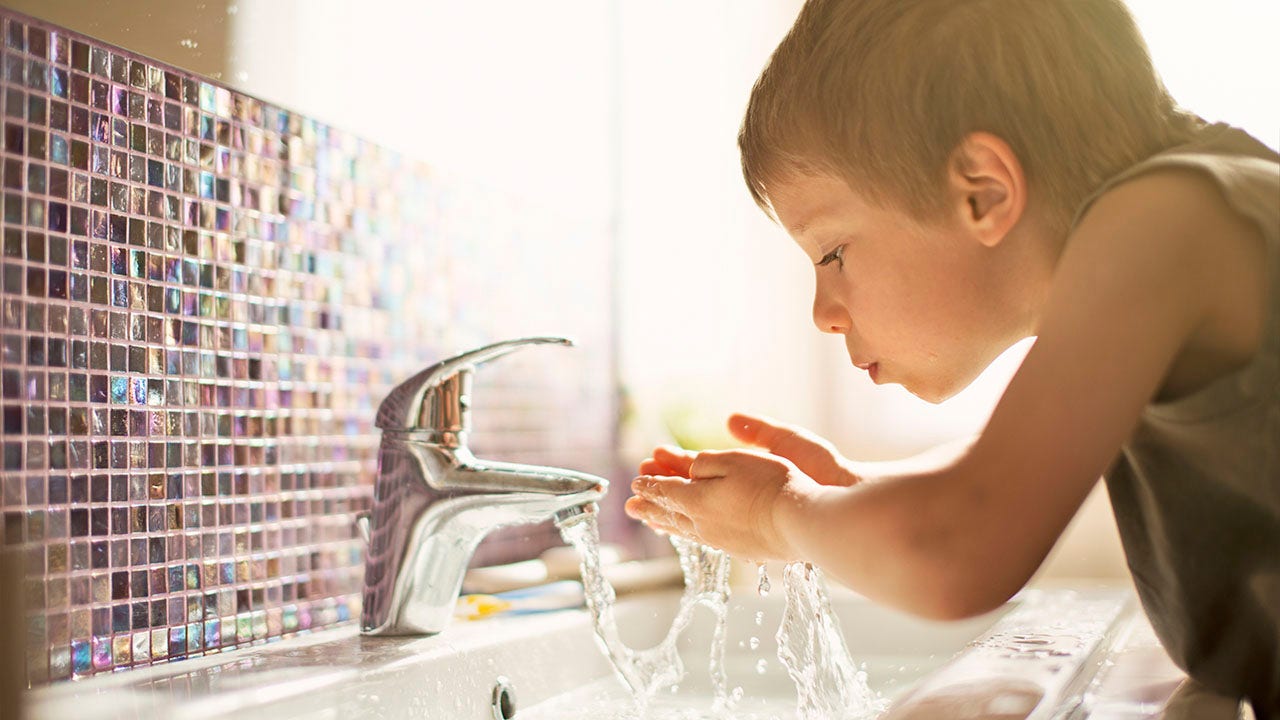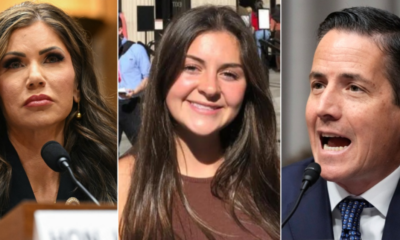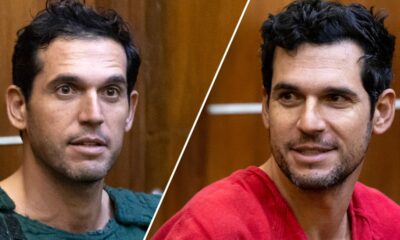Health
What Your Therapist Doesn’t Tell You

What Your Therapist
Doesn’t Tell You
A dozen counselors on what it’s really like to sit in the other armchair.
Certain things, they just can’t
say to your face
“I definitely have to suppress instincts and take myself out of ‘me mode’ sometimes. …
… Maybe from my own point of view, I’m like: ‘Yes! Break up with that person! Run as fast as you can!’ But from a therapy perspective, I have to empower them to make that choice. I’m only seeing a person for one hour a week, and I might not have the full picture, so I shouldn’t make decisions for someone else. It comes with practice. Honestly, sometimes you do really just want to jump out and be like ‘Do not do this.’”
— T. Rochelle Tice, L.C.S.W.
“ ‘I need to pee so bad.’ Clients don’t realize that we have five minutes between sessions and sometimes making it to the bathroom is not possible.”
— Jessa White, L.M.H.C.A.
“One time a client asked me to write an emotional-support-animal letter for her pet hedgehog. This is outside my wheelhouse, and I declined to do it. She was so upset that she stopped coming to therapy.”
— Han Ren, Ph.D.
“ ‘What is her husband’s name again?’ I’m terrible at remembering names no matter how hard I try.”
— Jenn Hardy, Ph.D.
“ ‘I suck as a therapist right now.’ ”
— Shani Tran, L.P.C.C., L.P.C.
It is personal
“I work with many Asian Americans seeking an Asian American therapist. I feel — and other therapists of color I know feel this, too — as if we do share more of ourselves in the room. When a client says they struggle with shame or guilt from a parent pushing them constantly, I share that I can relate to that, because my mom was also very tough. I only share things that feel kind of matter-of-fact to me, not emotional things that could hijack the session.”
— Thien Pham, L.M.F.T.
Your wildest confessions are
their 9-to-5
“I work with couples, and I’ve seen a lot of truth bombs come out. Once you build the safe space with clients, you get a lot of superintense moments — people have slapped their partners, or decided to break up in the session, or exploded and stormed off — and you just have to keep it together. There’s been quite a few times where someone had an unexpected outburst and I’m just sitting there, internally like: ‘What? Did they just say that? OK, we cannot react, we cannot react. … ”’
— T. Rochelle Tice, L.C.S.W.
The therapy-speak is out of control
“Within the last five years, I’ve noticed vocabulary coming into the therapy session, which people seem to be picking up online. …
… We have normalized going to therapy and consuming mental health content — pop psychology has entered the chat! — but there are cons to it. Young people are hearing a lot of messaging around everything being ‘trauma.’ I think that is really dicey. I am not in favor of widening the clinical definition of trauma, because of the potential to look for trauma in places where it may not exist. And I feel people are also becoming more boundaried, shifting to this kind of cancel culture. Sometimes people think that cutting other people off is self-care, and they may be right. But sometimes you can have a conversation with someone and let them know they upset you, and work through it to have a stronger relationship as a result. I think people are losing those social skills involved in rupture and repair.”
— Jacquelyn Tenaglia, L.M.H.C.
“There has been a large adolescent pool coming in that is familiar with therapy topics — but a very new, broader, more nebulous definition of them. The terminology fluency really caught me by surprise. What’s been really difficult to navigate is when a parent drops off their kid like, ‘Here’s my kid, fix them for me,’ and the kid is like, ‘I’ve been gaslit by narcissists!’”
— Kyle Standiford, Psy.D.
“I think most people are annoyed by the ‘therapy language’ that is coming in, but I want to bring a humility to it. I think the fact that people are coming in wanting to talk about their ‘insecure attachment’ or their ‘avoidant personality disorder’ is kind of wonderful. I appreciate it helping us become less hierarchical in our profession. So I say, let’s be curious with them about it, instead of feeling like, ‘They don’t know what they’re talking about, because I am the expert.’”
— Elizabeth Cohen, Ph.D.
The intensity is inescapable
“Twenty years ago, when I used to practice in Argentina, I saw middle-class clientele who came in with employment and health insurance. Then I came to the U.S. and started to work in community mental health. Many of my clients were marginalized Latinos; they had linguistic barriers, they were in constant migration, or escaping violence. You can’t do psychotherapy if a person doesn’t feel safe — there’s no way that’s going to happen. Sometimes you’re veering toward being a social worker or case manager. You’re doing things like getting in your car and meeting someone who just fled an abusive relationship and is waiting for you in a parking lot with a bag full of clothes and nowhere to go, or you’re in heart-wrenching situations with unaccompanied minors who have just made it past U.S. Border Patrol from rural parts of Guatemala or El Salvador. It is deeply meaningful and fulfilling sometimes. But it’s frustrating too, because as a therapist, you feel you can’t really offer what you signed up for.”
— Gabriela Sehinkman, Ph.D., L.I.S.W.-S.
They all see clients differently
“Therapy itself, it’s a bit of a dance — you want to see what the other person is bringing, and you dance with them. If they’re doing a waltz, you can’t break out hip-hop, and there are times when people just don’t want to dance.”
— Peter Chan, Psy.D.
“Most therapists are trained and taught to sit back and not show too much of themselves in the room. But I want to share bits here and there just to make people feel they are not alone, and to make them feel that they’re not crazy. To me, therapy is very much like dating, except, you know, obviously you don’t really want to date the person.”
— Thien Pham, L.M.F.T.
“I spend time in spaces like TikTok and Twitter and the gaming sphere; knowing what’s going on in gaming culture is really important for my young male clients, and this helps me connect with them.”
— Kyle Standiford, Psy.D.
Covid changed everything
“During Covid, I had this uncanny experience in which different people would almost say the same things in sessions, sometimes verbatim, around their emotions, week after week. People would come in with the same tone and tenor — so it was almost like an emotional forecast, and I could say to people: ‘Listen, this week, don’t be surprised if you feel angry. I’ve heard this three times just today.’ It was uncanny to see this broader, collective grief response. This very intense depression, anger, numbness. It captured a way that we are all connected. It’s hard for an individual to put themselves into context, but there was no denying, for me, these trends that I would see. My belief is that therapy, at its core, is a way to understand our emotional worlds and the ways we struggle as an individual — but while I used to focus more on diagnosing symptoms and putting them into a constellation of a personality structure or a disorder, now I take a lot more of an existential, zoomed-out perspective, and I think a lot of our problems stem from trying to find meaning and purpose in our lives. Now I can see how so many things go unprocessed in our emotions and seem unrecognizable to us. Ever since Covid, I have dedicated a lot more of my time and resources toward psychoeducation for a wider audience.”
— Lakeasha Sullivan, Ph.D.
Interviews have been edited and condensed for clarity.
Amy X. Wang is assistant managing editor for the magazine. She has written about the voyeuristic pleasures and pains of dogsitting for New York City’s wealthy and the widespread desire for expensive designer handbags prompting a profusion of cheap, phenomenally accurate counterfeits.

Health
Jennifer Hudson Lost 80-Lbs Without Depriving Herself—Learn Her Secrets

Sign Up
Create a free account to access exclusive content, play games, solve puzzles, test your pop-culture knowledge and receive special offers.
Already have an account? Login
Use left and right arrow keys to navigate between menu items.
Use escape to exit the menu.
Health
Kennedy’s Plan for the Drug Crisis: A Network of ‘Healing Farms’

Though Mr. Kennedy’s embrace of recovery farms may be novel, the concept stretches back almost a century. In 1935, the government opened the United States Narcotic Farm in Lexington, Ky., to research and treat addiction. Over the years, residents included Chet Baker and William S. Burroughs (who portrayed the institution in his novel, “Junkie: Confessions of an Unredeemed Drug Addict”). The program had high relapse rates and was tainted by drug experiments on human subjects. By 1975, as local treatment centers began to proliferate around the country, the program closed.
In America, therapeutic communities for addiction treatment became popular in the 1960s and ’70s. Some, like Synanon, became notorious for cultlike, abusive environments. There are now perhaps 3,000 worldwide, researchers estimate, including one that Mr. Kennedy has also praised — San Patrignano, an Italian program whose centerpiece is a highly regarded bakery, staffed by residents.
“If we do go down the road of large government-funded therapeutic communities, I’d want to see some oversight to ensure they live up to modern standards,” said Dr. Sabet, who is now president of the Foundation for Drug Policy Solutions. “We should get rid of the false dichotomy, too, between these approaches and medications, since we know they can work together for some people.”
Should Mr. Kennedy be confirmed, his authority to establish healing farms would be uncertain. Building federal treatment farms in “depressed rural areas,” as he said in his documentary, presumably on public land, would hit political and legal roadblocks. Fully legalizing and taxing cannabis to pay for the farms would require congressional action.
In the concluding moments of the documentary, Mr. Kennedy invoked Carl Jung, the Swiss psychiatrist whose views on spirituality influenced Alcoholics Anonymous. Dr. Jung, he said, felt that “people who believed in God got better faster and that their recovery was more durable and enduring than people who didn’t.”
Health
Children exposed to higher fluoride levels found to have lower IQs, study reveals

The debate about the benefits and risks of fluoride is ongoing, as RFK Jr. — incoming President Trump’s pick for HHS secretary — pushes to remove it from the U.S. water supply.
“Fluoride is an industrial waste associated with arthritis, bone fractures, bone cancer, IQ loss, neurodevelopmental disorders and thyroid disease,” RFK wrote in a post on X in November.
A new study published in JAMA Pediatrics on Jan. 6 found another correlation between fluoride exposure and children’s IQs.
RFK JR. CALLS FOR REMOVAL OF FLUORIDE FROM DRINKING WATER, SPARKING DEBATE
Study co-author Kyla Taylor, PhD, who is based in North Carolina, noted that fluoridated water has been used “for decades” to reduce dental cavities and improve oral health.
Fluoride exposure has been linked to a variety of negative health effects, yet benefits oral health. (iStock)
“However, there is concern that pregnant women and children are getting fluoride from many sources, including drinking water, water-added foods and beverages, teas, toothpaste, floss and mouthwash, and that their total fluoride exposure is too high and may affect fetal, infant and child neurodevelopment,” she told Fox News Digital.
The new research, led by scientists at the National Institute of Environmental Health Sciences (NIEHS), analyzed 74 epidemiological studies on children’s IQ and fluoride exposure.
FEDERAL JUDGE ORDERS EPA FURTHER REGULATE FLUORIDE IN DRINKING WATER DUE TO CONCERNS OVER LOWERED IQ IN KIDS
The studies measured fluoride in drinking water and urine across 10 countries, including Canada, China, Denmark, India, Iran, Mexico, Pakistan, New Zealand, Spain and Taiwan. (None were conducted in the U.S.)
The meta-analysis found a “statistically significant association” between higher fluoride exposure and lower children’s IQ scores, according to Taylor.
“[It showed] that the more fluoride a child is exposed to, the more likely that child’s IQ will be lower than if they were not exposed,” she said.

Scientists found a “statistically significant association” between higher fluoride exposure and lower children’s IQ scores. (iStock)
These results were consistent with six previous meta-analyses, all of which reported the same “statistically significant inverse associations” between fluoride exposure and children’s IQs, Taylor emphasized.
The research found that for every 1mg/L increase in urinary fluoride, there was a 1.63-point decrease in IQ.
‘Safe’ exposure levels
The World Health Organization (WHO) has established 1.5mg/L as the “upper safe limit” of fluoride in drinking water.
“There is concern that pregnant women and children are getting fluoride from many sources.”
Meanwhile, the U.S. Public Health Service recommends a fluoride concentration of 0.7 mg/L in drinking water.
“There was not enough data to determine if 0.7 mg/L of fluoride exposure in drinking water affected children’s IQs,” Taylor noted.
FDA BANS RED FOOD DYE DUE TO POTENTIAL CANCER RISK
Higher levels of the chemical can be found in wells and community water serving nearly three million people in the U.S., the researcher noted.
She encouraged pregnant women and parents of small children to be mindful of their total fluoride intake.

Nearly three million people have access to wells and community water with fluoride levels above the levels suggested by the World Health Organization. (iStock)
“If their water is fluoridated, they may wish to replace tap water with low-fluoride bottled water, like purified water, and limit exposure from other sources, such as dental products or black tea,” she said.
“Parents can use low-fluoride bottled water to mix with powdered infant formula and limit use of fluoridated toothpaste by young children.”
For more Health articles, visit www.foxnews.com/health.
While the research did not intend to address broader public health implications of water fluoridation in the U.S., Taylor suggested that the findings could help inform future research into the impact of fluoride on children’s health.
Dental health expert shares cautions
In response to this study and other previous research, Dr. Ellie Phillips, DDS, an oral health educator based in Austin, Texas, told Fox News Digital that she does not support water fluoridation.

The study researcher encouraged parents of small children to be mindful of their total fluoride intake. (iStock)
“I join those who vehemently oppose public water fluoridation, and I question why our water supplies are still fluoridated in the 21st century,” she wrote in an email.
“There are non-fluoridated cities and countries where the public enjoy high levels of oral health, which in some cases appear better than those that are fluoridated.”
CLICK HERE TO SIGN UP FOR OUR HEALTH NEWSLETTER
Phillips called the fluoride debate “confusing” even among dentists, as the American Dental Association (ADA) advocates for fluoride use for cavity prevention through water fluoridation, toothpaste and mouthwash — “sometimes in high concentrations.”

Fluoride is used in water, toothpaste and mouthwash to help prevent cavities. (iStock)
“[But] biologic (holistic) dentists generally encourage their patients to fear fluoride and avoid its use entirely, even if their teeth are ravaged by tooth decay,” she said.
“Topical fluoride is beneficial, while systemic consumption poses risks.”
Phillips encouraged the public to consider varying fluoride compounds, the effect of different concentrations and the “extreme difference” between applying fluoride topically and ingesting it.
“Topical fluoride is beneficial, while systemic consumption poses risks,” she cautioned.
“Individuals must take charge of their own oral health using natural and informed strategies.”
The study received funding from the National Institute of Environmental Health Sciences (NIEHS), the National Institutes of Health (NIH) and the Intramural Research Program.
-
/cdn.vox-cdn.com/uploads/chorus_asset/file/25822586/STK169_ZUCKERBERG_MAGA_STKS491_CVIRGINIA_A.jpg)
/cdn.vox-cdn.com/uploads/chorus_asset/file/25822586/STK169_ZUCKERBERG_MAGA_STKS491_CVIRGINIA_A.jpg) Technology1 week ago
Technology1 week agoMeta is highlighting a splintering global approach to online speech
-

 Science1 week ago
Science1 week agoMetro will offer free rides in L.A. through Sunday due to fires
-
/cdn.vox-cdn.com/uploads/chorus_asset/file/23935558/acastro_STK103__01.jpg)
/cdn.vox-cdn.com/uploads/chorus_asset/file/23935558/acastro_STK103__01.jpg) Technology7 days ago
Technology7 days agoAmazon Prime will shut down its clothing try-on program
-

 News1 week ago
News1 week agoMapping the Damage From the Palisades Fire
-
/cdn.vox-cdn.com/uploads/chorus_asset/file/25826211/lorealcellbioprint.jpg)
/cdn.vox-cdn.com/uploads/chorus_asset/file/25826211/lorealcellbioprint.jpg) Technology7 days ago
Technology7 days agoL’Oréal’s new skincare gadget told me I should try retinol
-
/cdn.vox-cdn.com/uploads/chorus_asset/file/25832751/2192581677.jpg)
/cdn.vox-cdn.com/uploads/chorus_asset/file/25832751/2192581677.jpg) Technology3 days ago
Technology3 days agoSuper Bowl LIX will stream for free on Tubi
-

 Business5 days ago
Business5 days agoWhy TikTok Users Are Downloading ‘Red Note,’ the Chinese App
-
/cdn.vox-cdn.com/uploads/chorus_asset/file/25835602/Switch_DonkeyKongCountryReturnsHD_scrn_19.png)
/cdn.vox-cdn.com/uploads/chorus_asset/file/25835602/Switch_DonkeyKongCountryReturnsHD_scrn_19.png) Technology1 day ago
Technology1 day agoNintendo omits original Donkey Kong Country Returns team from the remaster’s credits



















